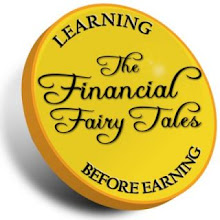Continuing social, economic and political change over the last five years has meant that the need for financial capability in young people is even more pressing. In many western counties issues surrounding increasing levels of personal debt, crashing markets and their effect on pensions mean that there is a greater need for individuals to take a more active and informed interest in their own financial future.
This article looks at various initiatives for teaching children about money around the world.
In South Africa, Teach Children to Save (TCTS) is a one-day initiative designed to spotlight the importance of teaching the country's youth about saving money. The objectives of the project include:
To raise awareness about the benefits of savings, financial planning and foster a culture of saving. To demonstrate the important role that the financial services sector can play in creating a financially literate nation. To initiate a national program that encourages a collaborative, industry-wide effort to increase financial literacy.
Teach Children to Save South Africa (TCTS SA) was launched during July Savings Month on the 25th July 2008. On this day, volunteer bankers and financial professionals became teachers for a day and delivered a one hour savings lesson to learners in grades 4 to 7. This pilot initiative laid the groundwork for an annual event that spotlights the important role that financial service providers can play in educating the nation's youth about saving. While modelled on the U.S. program, TCTS SA was customized to align with South African culture, financial education needs and the school curriculum especially Economic Management Science.
Scotland was the first part of the UK to publish guidance for schools in this area, back in 1999 Learning and Teaching Scotland, published Financial Education in Scottish Schools – A Statement of Position. This document describes managing money is “one of the most important and challenging features of everyday living” while outlining a minimum entitlement within the school curriculum. Their aims are for young people to understand key financial and economic ideas; be skilled in managing their financial affairs; recognise the importance of using financial resources responsibly and be able to operate in a confident and enterprising manner.
The Scottish programme as part of the 3-18 Curriculum for Excellence is under-pinned by the expectation that every teacher is a teacher of Numeracy, Literacy and Health and Well-being. A thematic / topic framework is suggested which schools may adapt to their particular needs. The four main elements of Financial Education in Scotland include: Financial Understanding, Financial Competence, Financial Responsibility and Financial Enterprise
An Australian report, ‘Financial Literacy - Australians Understanding Money’, found that young people are particularly interested in learning more about issues such as budgeting, saving, managing debt and avoiding financial scams.
Australian schools have introduced a nationally agreed Framework that provides an integrated cross- curriculum approach for all students from Kindergarten to Year 10.
Consumer and financial literacy will be integrated in programs across English, Mathematics, Science, Humanities - (Business, Commerce, Economics, Technology and Enterprise) Civics and Citizenship and ICT. This will allow all Australian students in their compulsory years of schooling to develop knowledge and understanding, skills and values in consumer and financial literacy.
An example of a Chinese approach to financial education is a theatre program for children aged between 8 and 12 years old in the cities of Beijing, Shanghai, Guangzhou and Shenzhen.
The program is based on a comic book, entitled "Agent Penny and Will Power in Operation Finance". Scenes are based on stories of daily life and present students with commonly-used financial tools and concepts, including budgeting and compound interest, as well as the formation of healthy financial habits.
According to schedules of the program, the Cheeky Monkey Theatre, presenting itself as the world's first ‘Chinglish’ Theatre Company, will visit between 40 and 50 schools in Beijing, Shanghai, Guangzhou and Shenzhen over the next ten months, and this play is expected to be seen by around 20,000 children.
In summary, financial literacy is regarded in many countries as a key life skill. The financial world is characterised by a wide range of choices and often high complexity, and as consumers we all need to take advantage of this dynamic environment. Young people are being targeted as consumers at an increasingly early age and may face complex financial choices. As 18 year olds, they are likely to have access to credit and loans in a way that would have been unheard of 20 years ago. Providing young people with good financial literacy skills helps to establish responsible attitudes and good habits from an early age. It helps foster an attitude to managing money that can enhance their long-term financial security and lifestyle.
Labels: financial education, teaching children about money

